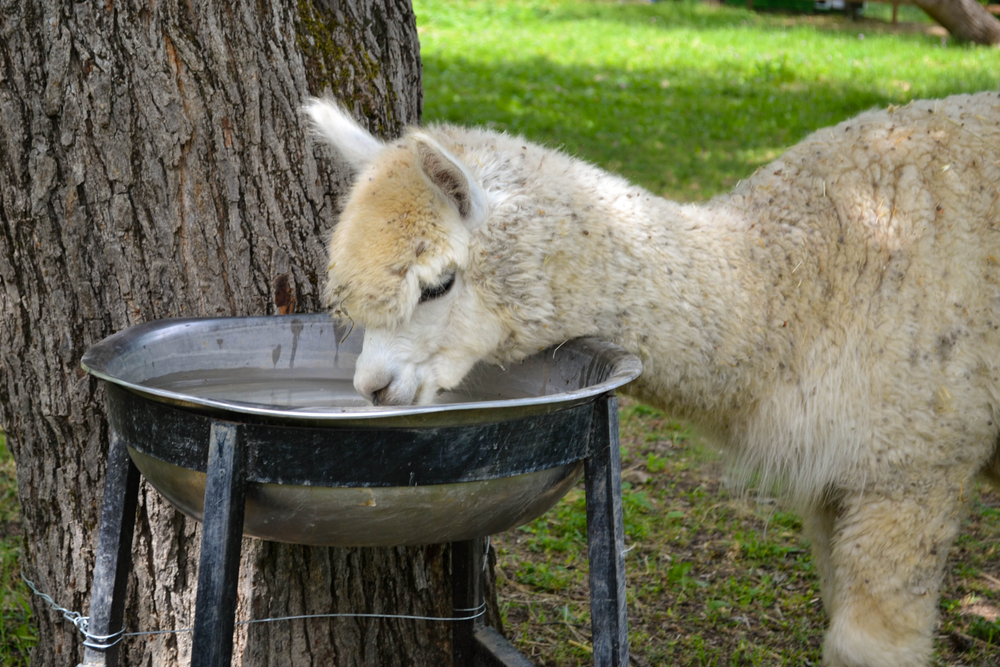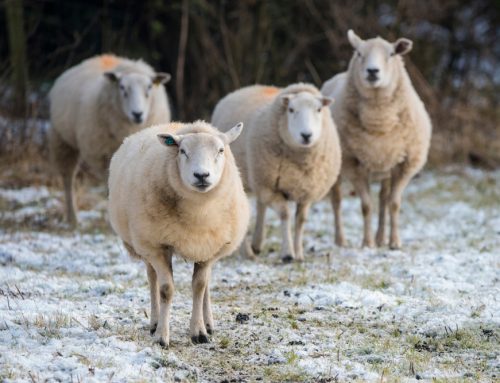Tennessee’s hot, humid, summer days can cause your pets and farm animals problems, including heatstroke, a serious veterinary emergency that can be life-threatening. Our team at Sale Creek Veterinary Services wants to help you learn to recognize heat stress, and we suggest ways to help prevent your pets and farm animals from suffering.
Heat safety for dogs and cats
Dogs and cats cannot sweat effectively—dogs depend mainly on panting to cool themselves, and cats cool down as saliva evaporates from their coat after grooming. These methods cannot combat excessively high temperatures, however, making your pet susceptible to heatstroke. Signs that indicate heatstroke include lethargy, excessive panting and drooling, vomiting, diarrhea, seizures, collapse, and elevated rectal temperatures. Normal temperature for dogs and cats is between 101 and 102.5 degrees. To safeguard your pet in hot, humid conditions, follow these safety measures:
- Never leave your pet in an unattended vehicle.
- Always supply fresh water for your pet, and clean their water bowls frequently. When outside, take bottled water and water bowls, so you can ensure you can provide water for your thirsty pet whenever needed.
- Do not exercise your pet strenuously on hot, humid days. Take frequent breaks during playtime or on walks, and avoid being out during the hottest time of day.
- Do not turn your air conditioner off when leaving for the day, because temperatures inside your home could become too high for your pet to endure.
If your pet shows heatstroke signs, take them to a cool area and begin cooling them down in a cool water bath. Take them to an emergency veterinary hospital as soon as possible.
Heat safety for rabbits
Rabbits are smaller than dogs and cats and, therefore, are more sensitive to changes in temperature, making them more vulnerable to heatstroke. Heatstroke signs in rabbits include fast, shallow breathing, hot ears, listlessness, wetness around the nose, tossing back their head while opening their mouth, and elevated rectal temperatures. Normal temperature for rabbits is between 101.5 and 104.2 degrees. To safeguard your rabbit in hot, humid conditions, follow these safety measures:
- Provide constant access to water. Change out water twice a day or more, and clean waterers thoroughly.
- Ensure your rabbit’s hutch is in the coolest area of your house or yard, and that they have access to shade.
- Use oscillating fans to improve air circulation in your rabbit’s habitat.
- Place cloth-wrapped frozen water bottles in your rabbit’s cage to help keep them cool.
If your rabbit exhibits heatstroke signs, take them to a cool place, and start cooling them down by dampening their ears with cool water. Take them to an emergency veterinary hospital as soon as possible.
Heat safety for sheep and goats
While sheep and goats tolerate heat better than some livestock, such as pigs, cattle, llamas, and alpacas, they are still at risk, especially when high temperatures are accompanied by high humidity. Heat stress signs in sheep and goats include continued panting, rapid breathing, weakness, inability to stand, and elevated rectal temperatures. Normal temperature for sheep and goats is between 101.3 and 103.5 degrees. To safeguard your small ruminants in hot, humid conditions, follow these safety measures:
- Provide numerous water sources, and clean and change waterers more frequently during the summer months.
- Shear woolly animals in the spring to allow for adequate wool growth to insulate them against the heat and avoid sunburning.
- Do not handle, work, or transport livestock in high temperatures.
- Provide access to shade to ensure your sheep and goats can escape from the sun.
If your sheep or goats exhibit heatstroke signs, take them to a cool area and begin cooling them by spraying cool water on their abdomen and limbs. Do not spray water over wooled animals, as the wool will absorb the water and prevent cooling. You can also apply rubbing alcohol to the area between their rear legs. Contact an emergency veterinarian as soon as possible.
Heat safety for llamas and alpacas

Llamas and alpacas are equipped for the chilly temperatures found in Chile and Peru’s high elevations, where they originated, so they are extremely susceptible to heatstroke. Heatstroke signs in llamas and alpacas include increased respiration rate, flared nostrils, lethargy, decreased appetite, reddened skin, disorientation, and elevated rectal temperatures. Normal temperature for llamas and alpacas is between 99.5 and 101.5 degrees. To safeguard your llamas and alpacas in hot, humid conditions, follow these safety measures:
- Ensure your alpacas and llamas have access to water at all times, and clean their waterers frequently.
- Ensure your alpacas and llamas have access to adequate shade.
- Shear their coats in the spring.
- Do not work your llamas and alpacas during hot weather.
- Provide plastic kiddie pools so they can sit in the water to cool down.
If your llama or alpaca shows heatstroke signs, take them to a cool area and start cooling them down by hosing their abdomen and limbs. Contact an emergency veterinarian as soon as possible.
Heatstroke is a serious condition for all animals, but can be prevented by taking the right precautions. If you are concerned your pet or farm animal may be affected by heatstroke, do not hesitate to contact our team at Sale Creek Veterinary Services.







Leave A Comment